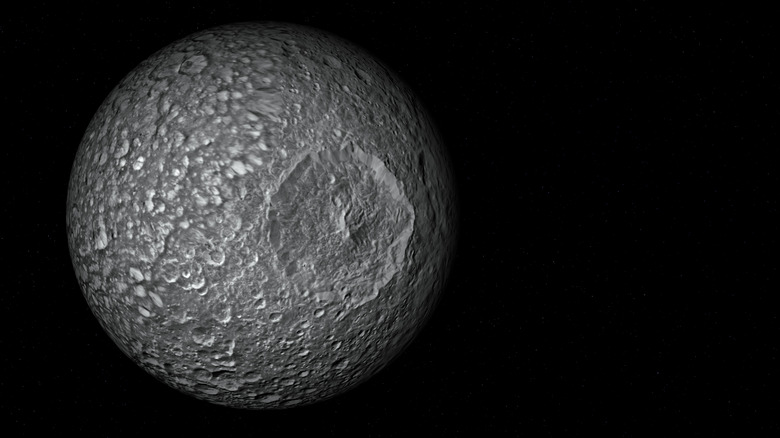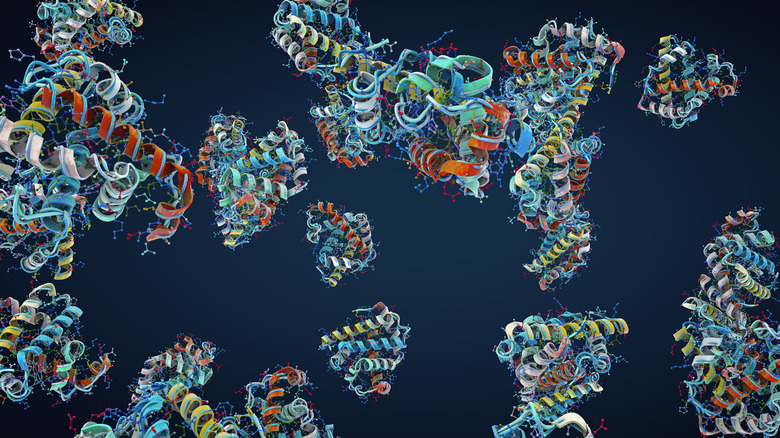7 Discoveries That Revolutionized Science In 2024
The news cycle in 2024 was busy to say the least. Chaotic may be the more appropriate term, with an onslaught of election drama, global humanitarian crises, war, natural disasters, and economic woes consuming us. With all of that to focus on, you probably didn't realize how many incredible scientific discoveries were made this year, and the exciting ways they could change our future.
The most consequential story in science continues to be climate change, and 2024 brought plenty of news in that field. The devastation of hurricanes Helene and Milton, wildfires in the Amazon rainforest, monsoons in India, and torrential rainfall in central Europe exemplified how extreme weather events are becoming more common due to climate change. 2024 was also the hottest year on record, and it is likely that Earth has now surpassed the 1.5 degree Celsius warming cap placed by the Paris Agreement.
However, the news hasn't all been bad. Far from it, in fact. In a day and age in which pessimism seems inescapable at times, the scientific community gave us new reasons to hope for a better future. We've made stunning discoveries about our own planet and others, found new treatments for chronic diseases, revolutionized industries through artificial intelligence, and even discovered a new form of magnetism. Here are the seven biggest scientific discoveries of the year, and how they could change life on our world and beyond.
Oceans in the outer solar system
The search for liquid water on other celestial bodies has long been a focal point in astronomy, and 2024 brought brand new evidence suggesting that liquid oceans could be hidden in the outer reaches of our solar system. In February, a paper published in Nature presented evidence for a vast subterranean ocean on Saturn's moon, Mimas. Although Mimas appears rocky like our own moon on its surface, the researchers noticed that it wobbles as it orbits Saturn, indicating a liquid layer just below the crust.
Mimas is sometimes called the "Death Star moon" because a massive impact crater on one side makes it resemble the "Star Wars" space station. The ocean must have formed after the crater, because an impact would have completely punctured the moon's crust had there been liquid beneath it. Based on this, the researchers estimate that Mimas's ocean is 25 million years old. That's just a sixth of the Atlantic Ocean's age, meaning the ocean is still in its early stages of development.
In October, another study was released in The Planetary Science Journal that illustrated how the craggy surface of Uranus' moon Miranda was most likely caused by the forces of an ocean beneath its crust. As much as half of the moon's interior could be liquid water. In the cases of both Mimas and Miranda, the subterranean oceans were likely formed by the tidal forces between each moon and its surroundings, which caused the core to heat up and melt part of the interior.
A cause of lupus
Autoimmune diseases present some of the most difficult cases in medicine because, for the most part, nobody has a clue what causes them. However, this year researchers managed to identify a cause of one of the most common autoimmune conditions: lupus. Known in full as Systemic Lupus Erythematosus, the disease leads to recurring flares in which the immune system attacks the organs, causing symptoms like joint pain, respiratory problems, fever, fatigue, and a signature butterfly flash across the bridge of the nose and cheeks. It is also a prominent cause of high single-stranded DNA antibodies, which in lupus affects the kidneys. The Lupus Foundation of America estimates that at least five million people worldwide have a form of lupus, with 90% of them being women.
A study published in Nature in July 2024, offers new hope for lupus patients, identifying a possible cause and treatment for the disease. Blood samples from 19 lupus patients showed a disproportionately high number of helper T cells, a type of white blood cell, which stimulate B cells, the white blood cells that create antibodies, to cause inflammation in various parts of the body. The reason that lupus patients produce too many of these T cells, and not enough of other types, stems from excessively high levels of a protein called interferon, which disrupts the receptor responsible for T cell productions. The researchers found that administering an interferon-blocking drug corrected the T cell imbalance, opening the door to a potential lupus treatment.
Monkeys with names for each other
One of the most ambitious and exciting scientific endeavors is the quest to understand how other species communicate with one another. Many studies have highlighted the vocal exchanges between dolphins, and it appears that elephants have a language of their own as well. However, scientists have long believed that humans are the only primates with a language structure, and that the vocalizations of our ape and monkey relations are merely genetically preprogrammed expressions rather than being shaped by social structures, as languages are. A study published in the journal Science in August 2024, turns this assumption on its head.
Marmoset monkeys, native to South America, appear to have names for one another, just like we humans do. A research team observed ten marmosets in three different families, recording their vocalizations and analyzing them with AI software. They found that marmosets have personalized calls that they use to get the attention of specific individuals. Adult marmosets were found to learn the names of marmosets from other families, smashing the previously-held belief that primate vocalizations are genetically pre-set at birth rather than developing through life experiences. This makes marmosets just the fourth species known to assign names to themselves, along with humans, dolphins, and elephants, and the first non-human primate known to have a language structure.
A Nobel Prize-winning AI
The public-facing scientific advancement of the 2020s has been artificial intelligence, and this year brought one of its most exciting achievements yet. The 2024 Nobel Prize in Chemistry was split this year between David Baker of the University of Washington and Demis Hassabis and John M. Jumper of Google DeepMind. All three made groundbreaking advancements in our knowledge of protein structures, with Hassabis and Jumper drawing particular attention for their use of AI.
One of the defining characteristics of proteins is that they are polymers: long chains of chemicals called amino acids. Identifying the amino acids in a protein is fairly straightforward, but predicted their arrangement is much more challenging. It can take years of analysis to map out a protein, but Hassabis and Jumper created an AI program called AlphaFold that can do the task within a few hours at most. AlphaFold made an immediate impact on the scientific community upon its release, and the program has already been cited over 20,000 times in scientific studies. It is being used for everything from developing new medications to creating enzymes that can break down plastic waste.
Dr. Baker, for his part, has spent the past two decades developing ways to synthesize proteins. With the use of computer models and, more recently, generative AI, Baker has not only managed to map the structure of proteins, but to create amino acid chains that form entirely new proteins unseen in nature. His work has been used to develop medications for COVID-19 and celiac disease.
Fresh insights on the Cambrian explosion
The Cambrian explosion is one of the most consequential events in our planet's history. Roughly 540 million years ago, Earth experienced a mass evolutionary event in which life forms became far more complex and diverse. Where before there had only been simple organisms, most of which weren't even mobile, there was suddenly a vast array of species with shells, legs, gills, teeth, and complex vision. At this point, terrestrial plants didn't even exist yet, and all life on Earth was confined to the water. Today, the best view we have into the Cambrian explosion comes through fossils found in sedimentary rock formations, with one of the best examples being in the Grand Canyon.
New analysis of fossil deposits in the canyon suggest that the Cambrian development was not a single "explosion" of life, but rather a series of smaller evolutionary events. A study published by the Geological Society of America in November 2024 reveals new evidence taken from the Tonto Group, a collection of sedimentary rock formations in the Grand Canyon. Researchers found that, instead of there being one large deposit of fossils corresponding to the Cambrian explosion, there were actually five distinct sedimentary levels formed by variations in sea level. This suggests that the longstanding narrative of a Cambrian "explosion" is inaccurate, and that it was really a series of smaller surges.
An innovative HIV vaccine
Human immunodeficiency virus (HIV) infects over a million people each year, and finding an effective way to prevent it has been challenging. Pre-exposure prophylaxis (PrEP) is available for those who may be at risk for HIV through either sexual intercourse or intravenous drug use. However, these treatments have thus far only been available through daily oral medication or a bimonthly vaccine. This year brought an exciting new breakthrough in the form of an HIV vaccine that only requires two doses per year — a far more convenient, and potentially more affordable, option than current PrEP options.
A study published in the New England Journal of Medicine in July 2024, demonstrated that lenacapavir, a vaccine created by American pharmaceutical company Gilead, was completely effective at preventing HIV infections in women. Over 2,000 cisgender female subjects were given the vaccine twice a year for two years. Not a single one of them contracted HIV in that time, whereas an equal group of subjects given oral PrEP still showed a 2% infection rate.
More promising news came in November, when a second study was released, this time testing lenacapavir on a mixed-gender group including cisgender men, transgender men and women, and nonbinary individuals across multiple countries. Out of more than 2,000 subjects, only two contracted HIV — a remarkable 99.9% success rate. The prestigious journal Science named lenacavapir its 2024 Breakthrough of the Year thanks to its groundbreaking approach to preventing one of the most challenging health crises in history.
A new class of magnetism
The year 2024 brought a particularly stunning scientific discovery with the identification of a previously unknown class of magnetism. The force of magnetism comes from the way that electrons in atoms orbit the nucleus. The orientation and strength of an atom's magnetic force is called a magnetic moment. For the past century, scientists have operated under the belief that there are two main classes of magnetism: ferromagnetism and antiferromagnetism.
Ferromagnetism occurs when all of the magnetic moments in a particular material are aligned parallel with one another, creating a strong magnetic force. Refrigerator magnets are an example of ferromagnetism. Antiferromagnetism occurs when the magnetic moments are antiparallel, facing opposite directions, which results in net zero magnetization.
In December 2024, researchers announced the discovery of a third class of magnetism called altermagnetism. The research, published in Nature, explains that altermagnets have antiparallel magnetic moments, but the atoms rotate in relation to their neighbors so that the forces don't end up canceling out. Altermagnets have the best properties of both ferromagnets and antiferromagnets. With how magnetic materials are widely used in the electronics industry, particularly in computers, and the discovery of altermagnetism could open the doors to faster and more efficient computer systems in the future.







